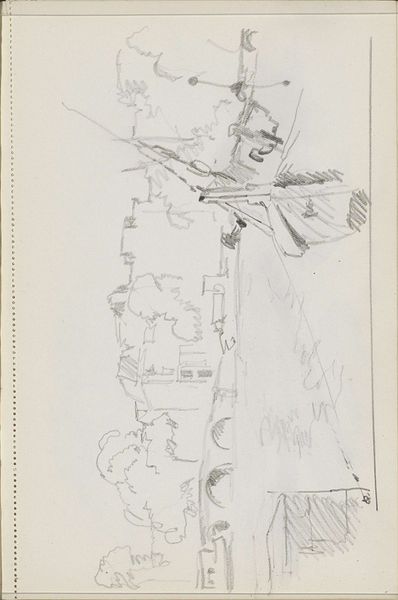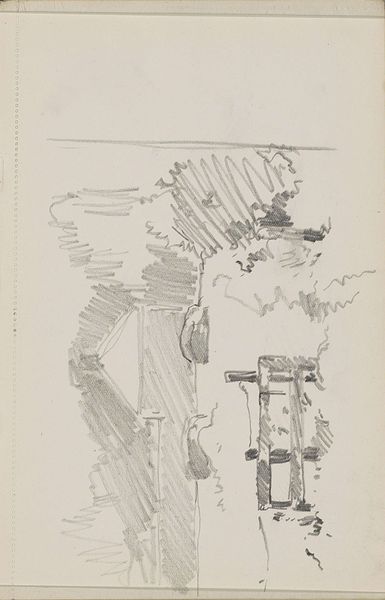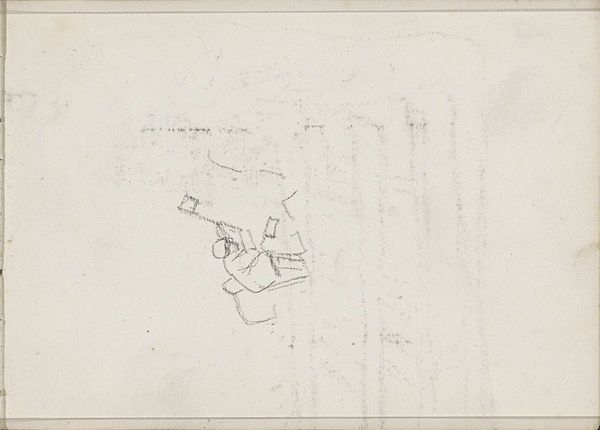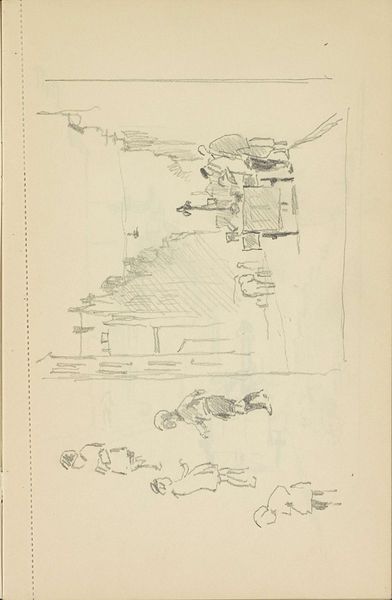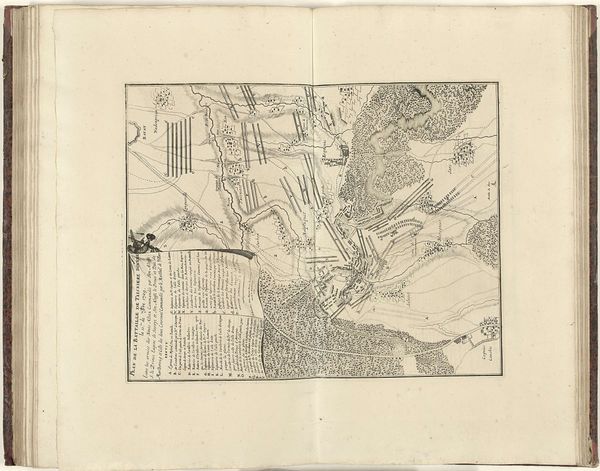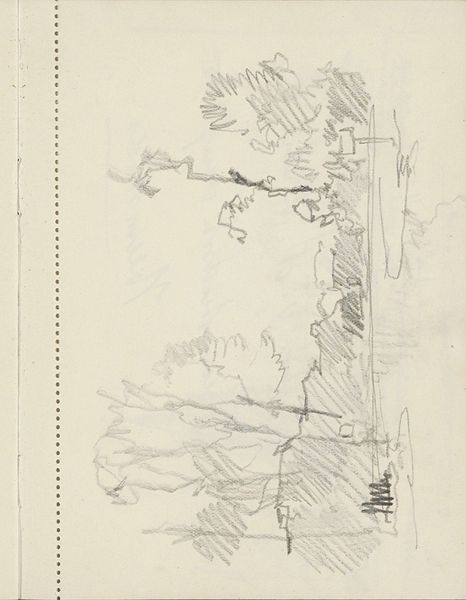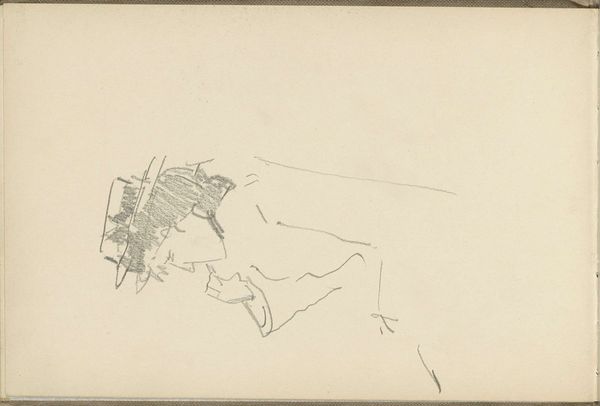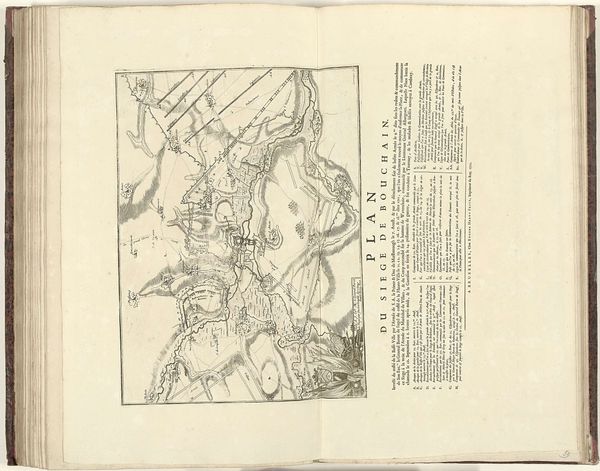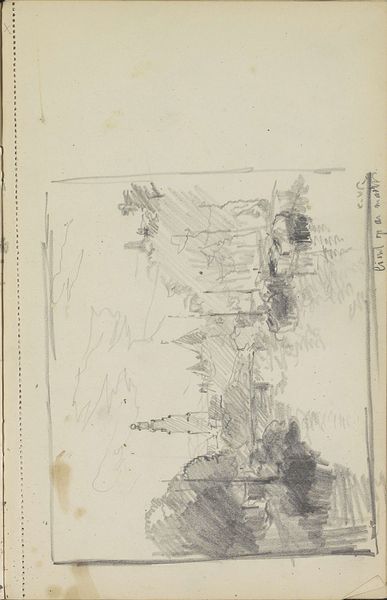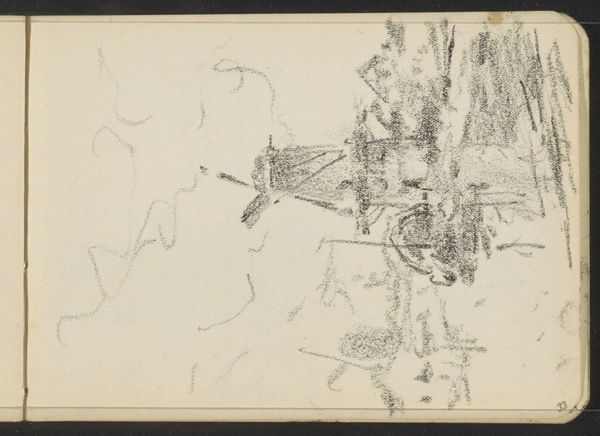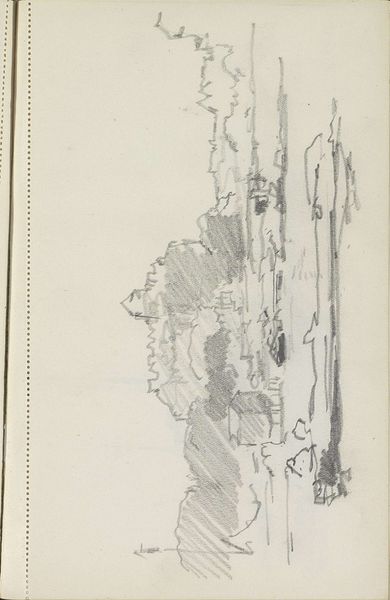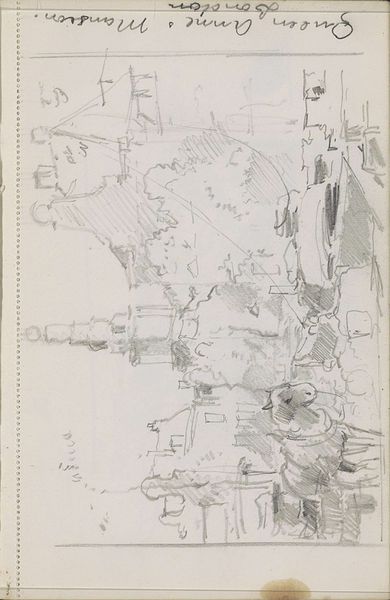
Copyright: Rijks Museum: Open Domain
This sketch by Cornelis Vreedenburgh depicts rural dwellings, rendered with a stark, almost hurried quality. The clustered houses, sketched with sharp, angular lines, evoke a sense of community and shelter, but also perhaps of enclosure. Consider the archetype of the home itself—a symbol deeply embedded in our collective consciousness. From the earliest cave paintings depicting rudimentary shelters to the elaborate domestic scenes of the Renaissance, the house represents not just physical protection but also emotional and psychological refuge. Yet, here, the sketchiness of the dwellings introduces a sense of unease. Are they protective, or are they prisons? The quick, agitated strokes might suggest a deeper anxiety about the stability and security of domestic life. This duality echoes through art history. It resurfaces in the works of artists like Edvard Munch, where the home becomes a site of psychological turmoil rather than solace. The subconscious associations linked to 'home' continue to evolve, reflecting our shifting perceptions of safety and belonging.
Comments
No comments
Be the first to comment and join the conversation on the ultimate creative platform.
